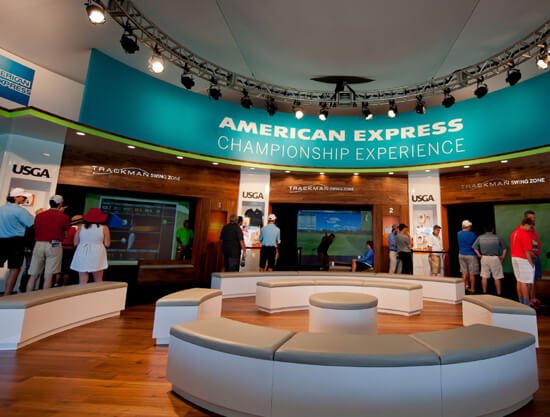August 18, 2018 5 min read
Opinions expressed by Entrepreneur contributors are their own.
In June, a 123-year-old tradition attracted hundreds of thousands of attendees to New York’s Long Island, and brands such as American Express, Lexus and Deloitte flocked. Each engineered a multifaceted experiential activation at the 2018 U.S. Open golf tournament — inviting affluent consumers into specialized relaxation spaces or hooking them up to virtual reality golf simulators.
It was an impressive spread, to be sure. But experiential marketing isn’t just about impressing people. It’s about impressing people in a way that galvanizes them to impress others. The experience is a catalyst that sparks conversations and drives conversions. The point is not to have any effect; it’s to have an intended effect. And to be successful, you must define what that is early on, then build every aspect of your experience around it.
A new definition of impressive
For years, press and social impressions were the gold standard for how brands quantified the success of their events and experiential campaigns. Yet this approach insufficiently articulates the deeper impact and insights that can be gleaned from an audience’s experience at an event.
It’s one of the reasons we’re pioneering a proprietary approach to measuring the effectiveness of an event. Ultimately, we focus on the metrics that indicate how an immersive experience drives deeper emotional impact and shifts long-term consumer perception. In other words, how does an experience capture the audience’s attention, then convert that attention into enhanced consideration, sentiment and affinity?
That said, when it comes to measuring the effectiveness of your experiential efforts, there’s still no silver bullet. But that fact only reinforces how integrated and deep experiential marketing can go. The more attention we dedicate to finding ways to quantify how an experiential program transforms consumers and their connection to the brand, the closer we will be to proving true return on investment. Here are three steps you can take to get started:
1. Consider measurements of value, not volume.
More brands — such as Crayola, Oscar Mayer and Hertz — are integrating experiential activations into their marketing mix. In fact, according to Bizzabo, 91 percent of overperforming businesses emphasize experiential marketing more than underperforming companies. Experiential marketing is an important piece of the pie, but like every other marketing effort, it must deliver true value and a demonstrable ROI.
To prove ROI, you must begin by asking the right questions. For instance: “At the end of the journey, what do you want to leave consumers with?” The answer will define the purpose and priorities of the whole campaign; it should act as a guiding principle that all components of the event are filtered through.
Resist the urge to gather as much data as possible; rather, gather data that informs your objectives. Having thousands of people show up to an event makes it sound like a success. But if none of them amplified the experience on social media, the effort did not have the intended effect.
2. Don’t just receive feedback — chase after it.
One of the best ways to determine how consumers felt about your experience is to ask. That said, it’s important to get creative with your efforts. Surveys aren’t the only way to learn what people think.
Consider distributing interactive polls that feel more engaging than obligatory. According to a report from Event Manager Blog, at least 60 percent of attendees actively use their smartphones throughout the duration of an event — making smartphones an ideal platform for soliciting honest, organic feedback.
3. Leverage tech to measure the (seemingly) unmeasurable.
Bizzabo’s “Event Marketing 2018 Benchmarks and Trends” report showed that 87 percent of executives believe in the power of live events, and they plan to invest more in them in the future. Some of the extra investment should go to data-driven technologies. Facial recognition technology, for example, allows marketers to track a guest’s evolving moods in real time and with incredible precision. RFID technologies offer similar insights into how guests move though a space and interact with exhibits.
On the whole, technology empowers you to deliver more dazzling and customized experiences while collecting data about the impression your experiences make.
When brands can successfully deliver meaningful consumer experiences, research from Event Marketing Institute’s “2016 EventTrack” report shows that 74 percent of consumers are more likely to buy. However, experiential marketing won’t deliver the ROI you’re looking for by merely looking innovative and exciting on the surface. Instead, it’s about setting clear objectives, delivering a contextualized brand narrative that consumers want to amplify, and translating the impact of that experience into hard metrics and empirical insights.
Source
Comments are closed.


